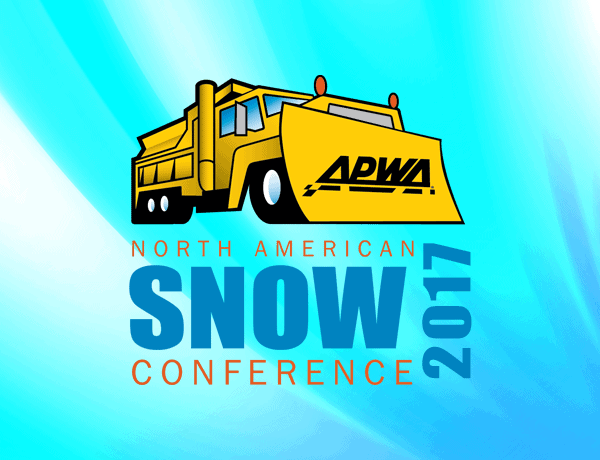Video
Weather challenges and solutions vary by location. Focusing on case studies in recent Midwest winter events, attendees will learn to which weather parameters should weigh heavier in operational decisions for…
Read MoreOne of the challenges for an agency is ensuring that you have a comprehensive, appropriate, and up-to-date snow plan. The comprehensive nature of such plans means that there is so…
Read MorePut us together, Minneapolis and St. Paul, known as the Twin Cities, become one of the largest Snowbelt cities in the United States. While we have many similarities as urban…
Read MoreHow do you implement so many new ""futuristic"" technologies into the fabric of today's cities? That is the question the U.S. Department of Transportation (USDOT) set forth in the 2015-16 Smart Cities Challenge offering $40 million to the winning city. This presentation will highlight the 28 proposed smart city projects and initiatives outlined in the City of Columbus, Ohio's winning proposal, what distinguished their application from the other six finalists, and the challenges the project team overcame. We will share lessons learned and next steps, and will highlight what knowledge can be transferred to other cities looking to implement smart and sustainable projects and initiatives.
Read MoreIn 2015, the City of Ann Arbor, Michigan, embarked on an integrated stormwater level of service and rate assessment study. Community members were engaged in a discussion about the city's stormwater capital and financial needs. Throughout the project, an advisory group made of ratepayers gave input and guidance for city staff to validate and pursue options to improve the stormwater utility program and meet the community's desired level of service.Learning Objectives: Engage the community in public works decisions.Evaluate future funding needs to meet a defined level of service.Explore opportunities to expand community understanding or public works' roles and responsibilities.
Read MoreThe Crosstown Parkway Extension is the culmination of 30-years of planning for Port St. Lucie, Florida. This project will provide a much-needed third bridge crossing the North Fork of the St. Lucie River. The 4000-foot long bridge will traverse a highly environmentally sensitive area requiring minimization of wetland impacts and protection of the Savannas Preserve State Park. It will feature an architecturally unique design and include the first superstreet intersection in Florida involving a restricted crossing U-turn. Discover how design-build principles and practices are being used to manage this exciting project.Learning Objectives: Discover the benefits of the design-build approach for the owner, contractor, and the engineer.Enhance the effectiveness of project management through collaboration.Optimize traffic flow using alternative intersection design.
Read MoreFunding for infrastructure renewal and maintenance is one of the top issues facing the nation today. Now is an important time for public works and infrastructure professionals to be aware of how the legislative and appropriations processes work. APWA Government Affairs staff will provide an overview of the process and the role that APWA plays in tracking the latest activities affecting public works. They will also share how APWA advocates for infrastructure investment and how you can become involved.Learning Objectives:Describe the legislative and appropriations process.Find the resources you need to stay on top of issues and activities affecting public works.Participate in APWA's Legislative Action Center to make sure that your voice is heard.
Read MoreThe City of South Bend, Indiana, was one of the recipients of the 2016 USDOT's Mayor's Challenge Award for Overall Success for its Smart Streets Initiative. The goal was to create a sense of place and support a vibrant downtown, which included the creation of streetscapes that required conversion of one-way to two-way streets, wide sidewalks, bicycle facilities, on-street parking, street trees, and public arts. This project also simultaneously addressed utility coordination and green solutions related to the city's long-term combined sewer overflow (CSO) plan. Construction of this project required adaptive strategies to address underground conflicts and delays.Learning Objectives:Examine South Bend's Smart Streets Initiative.Review the challenges and solutions that occurred during the planning and implementation of the two-way conversion.Evaluate the economic and social impacts of complete streets.
Read MoreLakeland, Florida, has adopted a leading pedestrian interval (LPI) phase at 25 of its signalized intersections in the Central Business District. This consists of providing the pedestrian with a five-second ""head start"" compared to motorists. The pedestrian should be in a better position to finish crossing the intersection more safely. To assess LPI's effectiveness, a before and after study is being conducted. Preliminary results support that LPI-treated intersections do result in a reduction of crashes without adversely affecting intersection levels of service. They appear to work best in pre-timed signal locations. Two pedestrian-activated push button locations showed no significant reductions in crashes.Learning Objectives: Evaluate the benefits of installing LPI at intersections.Examine the process the City of Lakeland used to install LPIs at its intersections.Review Lakeland's data regarding the number of crash reductions occurring at LPI intersections.
Read MoreRISE (Reentry Initiative through Structured Employment) – The City of Fishers, Indiana, has created an inspiring program designed to both recruit highly motivated employees into public works positions and, more importantly, help in the rehabilitation process of citizens who made bad choices, paid their debt to society, and are now faced with the challenge of finding meaningful employment. Feeling that just providing employment is not enough, they established a monthly training regimen that includes basic personal financial management skills. Participants are also given the option of going through the agency's in-house CDL class. If there are positions available when participants complete the program, an opportunity is offered for them to apply for full-time employment. If no positions are open and they were model employees, they can receive a letter of reference from the Mayor. Will this solution work in your community?Learning Objectives: Provide a unique solution to workforce recruitment and engagement.Attract applicants that are motivated and eager to perform.Develop a life-changing program that affects the well-being of potential employees and their families.
Read More
